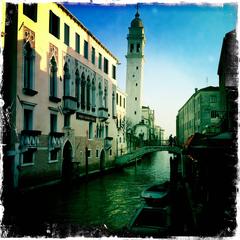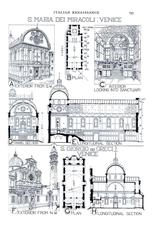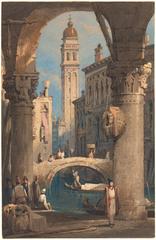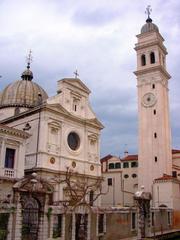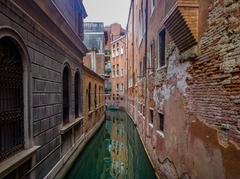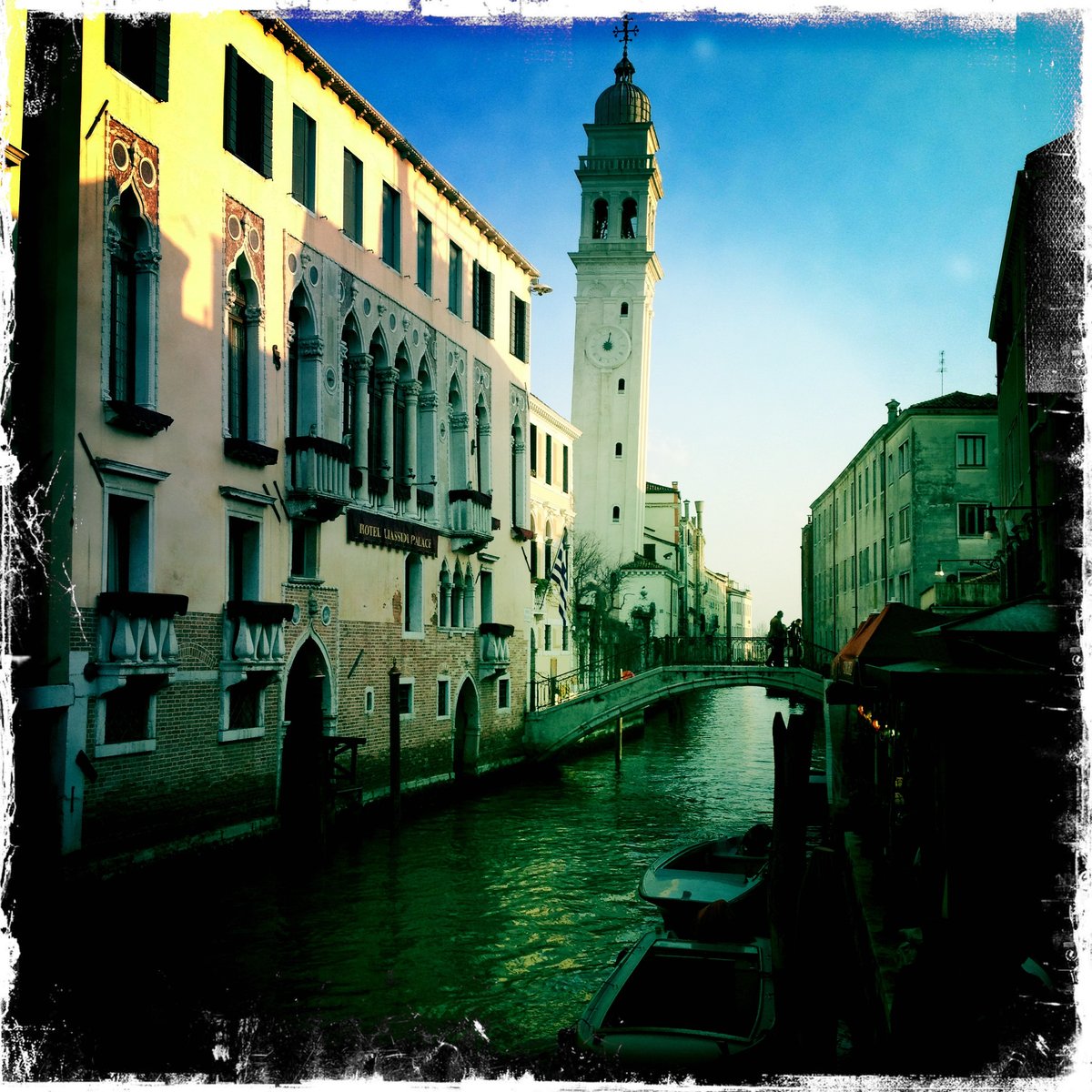
San Giorgio dei Greci Venice: Visiting Hours, Tickets, and Historical Sites Guide
Date: 14/06/2025
Introduction
San Giorgio dei Greci stands as one of Venice’s most captivating historical and cultural landmarks, representing the rich legacy of the Greek Orthodox community in the city. Established in the 16th century by Greek refugees, the church blends Renaissance and Byzantine architecture and is renowned for its leaning bell tower and magnificent iconostasis. Whether you are a history enthusiast, art lover, or cultural traveler, San Giorgio dei Greci offers a unique window into Venice’s cosmopolitan past, making it a must-see site for visitors.
(Panhellenic Post, Venice Travel Guide, Lonely Planet)
Table of Contents
- Introduction
- Historical Background and Greek Presence
- The Struggle for Religious Recognition
- Construction and Architectural Features
- Artistic and Spiritual Heritage
- The Greek Quarter and Cultural Institutions
- Visiting Information: Hours, Tickets, and Accessibility
- Special Events and Festivals
- Nearby Attractions
- Frequently Asked Questions (FAQ)
- Tips for Visitors and Photographic Spots
- Visual and Media Suggestions
- Plan Your Visit and Stay Connected
- References
Historical Background and Greek Presence
The Greek community in Venice traces its roots to the late Middle Ages, significantly expanding after the Fall of Constantinople in 1453. By the late 15th and early 16th centuries, Greeks made up the largest foreign population in Venice, numbering around 5,000. Fleeing Ottoman expansion, many arrived as merchants, sailors, and scholars, contributing to the city’s economic and intellectual life. Their presence is reflected in the Castello district, known for its Greek Quarter, and in place names like Rio dei Greci and Ponte dei Greci (Panhellenic Post, OrthodoxWiki, bonjourvenise.fr).
The Struggle for Religious Recognition
For centuries, the Greek Orthodox community faced restrictions on public worship. Initially, Greeks in Venice attended Catholic churches. In 1498, they were permitted to establish the Scuola de San Nicolò dei Greci, a confraternity for social and religious support. After persistent petitions, the church was finally authorized in 1539, funded by a tax on ships arriving from Orthodox territories—a testament to the Greek community’s determination and integration (Venice Travel Guide, OrthodoxWiki).
Construction and Architectural Features
Design and Exterior
San Giorgio dei Greci was built between 1539 and 1577, with design contributions from architects Sante Lombardo and Giannantonio Chiona. The church’s exterior exemplifies a Renaissance aesthetic with a single-aisled basilica plan and a central dome. Above the main entrance, a dedicatory inscription dated 1564 honors the Greek community’s efforts and dedication to Christ the Saviour and St. George (classroom.istitutoellenico.org).
The Leaning Bell Tower
Completed in 1592, the slender campanile designed by Simone Sorella and built by Bernardino Ongarini is renowned for its pronounced lean—an iconic feature of Venice’s skyline, attributed to the city’s soft, waterlogged soil. The bell tower, constructed from white Istrian stone, stands as a symbol of endurance and is a favorite photographic subject (atmoph.com, greekreporter.com).
Campo dei Greci
Located at the heart of Venice’s historical Greek Quarter, the Campo dei Greci is notable for its two Venetian wells adorned with carvings of St. George and St. Nicholas, reflecting the community’s religious and social influence (classroom.istitutoellenico.org).
Artistic and Spiritual Heritage
Interior Highlights
The church’s interior showcases a blend of Orthodox and Venetian Renaissance styles:
- Iconostasis: The golden iconostasis, painted primarily by Michael Damaskinos of the Cretan School, features 46 icons depicting scenes from the life of Christ and the saints. The vivid colors and expressive figures are hallmarks of Cretan iconography (classroom.istitutoellenico.org).
- Dome Fresco: The dome, frescoed between 1589 and 1593 by Giovanni Kyprios under the supervision of Tintoretto, illustrates the Last Judgement with Christ the Judge, Apostles, angels, and prophets.
- Historic Icons: The church houses precious icons, including a 14th-century Christ Pantocrator brought from Constantinople by Anna Notaras, and others created by renowned post-Byzantine artists.
- Ambon (Pulpit): Designed by Giovanni Grapiglia, the unique pulpit is accessed via a staircase embedded in the wall.
Mosaics and Additional Art
- Façade Mosaics: Four mosaics (1564–1574) and a courtyard mosaic of Saint George.
- Interior Artworks: Notable mosaics such as the Annunciation of the Virgin Mary (1902) and the Transfiguration of Christ (17th century).
The Greek Quarter and Cultural Institutions
Adjacent to the church is the Scuola di San Nicolò dei Greci, headquarters of the Greek confraternity, and the former Flanginian School—now the Hellenic Institute of Byzantine and Post-Byzantine Studies, preserving Greek language and culture (OrthodoxWiki, greekreporter.com). The area also hosted a Greek Girls’ School and a monastery, making it the focal point of Greek life in Venice.
Visiting Information: Hours, Tickets, and Accessibility
- Hours: Generally open Monday to Saturday, 10:00 AM – 5:00 PM. Closed Sundays and public holidays. Hours may vary during religious services or festivals—verify before your visit (San Giorgio dei Greci Official Site).
- Tickets: Entry to the church is free; donations are welcome. The adjacent Museum of Byzantine Icons (Museo delle Icone Bizantine) charges a small fee (around €5–7).
- Guided Tours: Available via the Hellenic Institute or local operators, often including detailed explanations of the church’s history and art.
- Accessibility: The church has step-free entrance and nearby accessible restrooms, but some historic areas may be less accessible—contact the site for details.
- Contact:
- San Giorgio dei Greci Official Site
- Phone: +39 041 123 4567
- Email: [email protected]
Special Events and Festivals
San Giorgio dei Greci celebrates the Feast of St. George on April 23 each year, featuring religious services and cultural events open to the public. Liturgical celebrations and other Greek Orthodox festivals punctuate the calendar (Orthodox Times).
Nearby Attractions
- St. Mark’s Basilica: Renowned for its Byzantine mosaics, a short walk away.
- Doge’s Palace: Explore Venetian political history and art.
- Rialto Bridge: Iconic bridge with bustling markets.
- Campo Santa Marina: A vibrant local square.
- Museo delle Icone: Next to the church, with a major collection of Byzantine and post-Byzantine icons.
(Tourist Secrets, goaskalocal.com)
Frequently Asked Questions (FAQ)
Q: What are the opening hours?
A: Monday to Saturday, 10:00 AM – 5:00 PM (closed Sundays and public holidays; check for special event changes).
Q: Is there an entrance fee?
A: Entry to the church is free; the museum charges a modest fee.
Q: Can I take photos inside?
A: Photography is usually permitted without flash, except during services.
Q: Are guided tours available?
A: Yes, through the Hellenic Institute or local tour operators.
Q: Is the church accessible to those with disabilities?
A: The main entrance is step-free; contact the church for further accessibility details.
Q: How do I get there from St. Mark’s Square?
A: Walk east along Riva degli Schiavoni for about five minutes.
Tips for Visitors and Photographic Spots
- Best Time to Visit: Early morning or late afternoon for fewer crowds and best lighting.
- Dress Code: Respectful attire is required; shoulders and knees should be covered.
- Photography: Capture the bell tower from the Rio dei Greci canal and the iconostasis from the nave.
- Nearby Cafés: Sample authentic Mediterranean cuisine in the Greek Quarter.
Visual and Media Suggestions
- Image Ideas:
- Exterior façade and leaning bell tower
- Interior iconostasis and dome fresco
- Byzantine icons at the museum
- Campo dei Greci with its Venetian wells
Include descriptive alt text for all images, such as “San Giorgio dei Greci church façade in Venice” or “Iconostasis of San Giorgio dei Greci.”
- Interactive Tools:
- Use virtual tours and maps from the official website for enhanced planning.
Plan Your Visit and Stay Connected
San Giorgio dei Greci is more than a monument—it is a living symbol of the Greek community’s resilience, identity, and contribution to Venice’s rich tapestry of cultures. Plan your visit by checking the latest hours and events, and consider joining a guided tour for deeper insight.
Download the Audiala app for up-to-date information, audio guides, and interactive maps. Follow us on social media for travel tips, event updates, and insider guides to Venice’s historical sites. Explore our related articles for more on Venetian heritage.
References
- Panhellenic Post
- OrthodoxWiki
- Venice Travel Guide
- Orthodox Times
- Lonely Planet
- Greek Herald
- Venice Guide and Boat
- Triphobo
- Bonjour Venise
- Greek Reporter
- classroom.istitutoellenico.org
- atmoph.com
- goaskalocal.com
- Tourist Secrets
Experience the rich heritage and spiritual beauty of San Giorgio dei Greci—Venice’s living link to the Greek world. Download the Audiala app, explore our related articles, and follow us for more on Venice’s hidden treasures.
